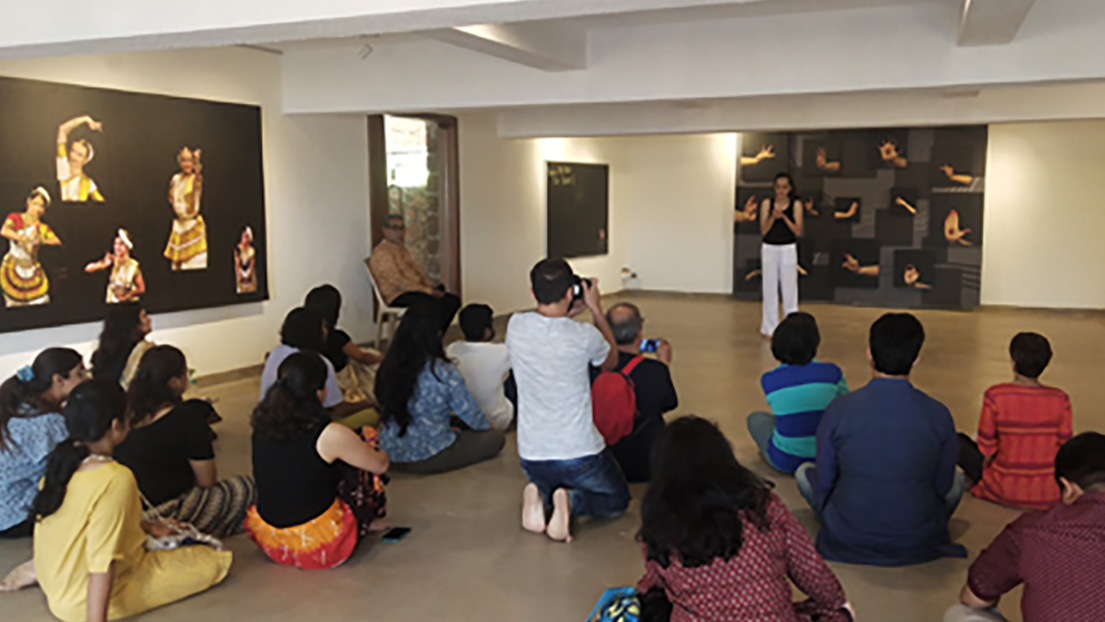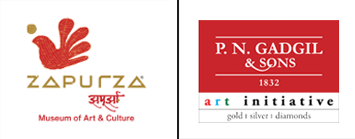Curatorial note:
Kathak
‘Katha Kahe So Kathak’, meaning Kathak is the art of storytelling. It is regarded as one of the eight classical dances of India. The term Kathak is derived from the Vedic Sanskrit word Katha which means “story”, and Kathakar which means “the one who tells a story”, or “to do with stories”.
Kathak is a dance form that has been enriched by the contributions of musicians, dancers, royal courts and patronage. Starting as a tradition of Raas-Leela in the temples of Brindavan, the form picked popularity by its Lok-dharmi approach.
Having developed over a period of time through invasions, Kathak rooted itself in three major gharanas-
Jaipur Gharana: the technique was of top priority along with layakari or rhythmic virtuosity
Banaras Gharana: the spins, tricks and turns drew a lot of attention thus bringing a different flair to the otherwise popular culture of today.
Lucknow Gharana: hallmarked by smooth graceful movements, precision and delicacy paired with classical music like thumri, dadra and horis.
Much like its geographical placement and grandeur, Kathak grew in its presentation, it’s aesthetics and it’s adakaari. This long-standing historical association developing from temple traditions of storytelling to the courts and now, the proscenium stage reflects very strongly in the form’s aesthetics, laheja and tehzeeb (loosely translated as ‘accent’ & ‘etiquette’). Today, Kathak enjoys immense popularity both locally and globally.
Mohiniyattam (Mohiniattam)
Mohiniyattam is a classical dance form from Kerala in South India. One among the eight Indian classical dance forms, Mohiniyattam is a graceful dance to watch. The term Mohiniyattam comes from the words Mohini meaning a woman who enchants onlookers and aattam meaning graceful and sensuous body movements. Thus, the word Mohiniyattam literally means – dance of the enchantress.
Mohiniyattam has a legend attached to it as per the Hindu mythology. It says that, after the ocean of milk was churned jointly by the gods and the demons to extract the elixir of life, the demons took the divine brew by force. Following the incident, Lord Vishnu came to the rescue of the gods. He allured the demons by taking the form of a woman with outstanding beauty called Mohini and stole the elixir of life from them and handed it to the gods. The enticing acts of Mohini are reflected in the dance form of Mohiniyattam. At a time when the Devadasi tradition was prevalent in many parts of south India, Mohiniyattam used to be performed by Devadasis (temple dancers) in temples, during the rule of the Chera kings from 9 to 12 C.E.
The musical accompaniment of Mohiniyattam dance involves what is known as chollu. The lyrics are in Manipravalam, which is a mixture of Sanskrit and Malayalam.
Simple, yet elegant costume is one of the aspects that give Mohiniyattam a unique identity among classical dance forms of India. The attire for Mohiniyattam consists of white sari, bordered with broad golden brocade (called kasavu in Malayalam).



